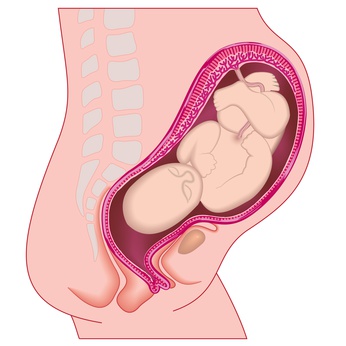2019/12/23

Procedure-related miscarriage is the most crucial complication of the prenatal invasive tests which are being used for the diagnosis of fetal aneuploidies. Even though several risk factors like operator experience, gestational age, sampling route, and the number of tapping have been suggested for the procedure-related miscarriage, the cause of this complication remains unknown.
Cervical length (CL) has been proved as an effective predictor of preterm birth. This leads to the idea of whether CL may predict procedure-related miscarriage. A study has been conducted by a team of senior medical professionals led by Eminel Demirel to determine the predictivity of CL regarding the miscarriage associated with diagnostic prenatal invasive procedures.
This prospective cohort study was conducted among 1052 singleton pregnant women who had undergone prenatal invasive procedures in two separate maternal-fetal medicine units in Turkey between January 2012 and May 2018. Suitable diagnostic prenatal invasive procedures and transvaginal sonographic CL measurement were performed on all the patients. The shortest cervical length was recorded.
Two miscarriages occurred within two weeks after the procedures, one at the 13th week of pregnancy in those patients who had undergone chorionic villus sampling and the other at the 18th week in those who had undergone amniocentesis. Karyotypes were normal in both miscarriages. The miscarriages occurred were evaluated as procedure-related miscarriages.
The cervical lengths were 28 mm and 30 mm in the procedure-related miscarriages and the mean CL was 32.7 mm in the ongoing pregnancy group. Even though the authors could not accomplish statistically proven result with this data, the cervical lengths were found to be within normal limits in both the miscarriages.
Significant differences could not be found between the pregnancies with miscarriages and the ongoing pregnancies with respect to the variables like the needle size, needle insertion location, test indication, number of insertions, and karyotyping results.
The possible limitation to their study, as pointed out by the authors, was that the measurement of transvaginal CL was done after all prenatal invasive procedures. In order to prevent the likely uterine contractions which could affect the cervix measurement, they recorded the shortest CL during measurements. Moreover, this was the first study of this kind to determine the predictivity of CL regarding the miscarriage associated with diagnostic prenatal invasive procedures.
In this study, the number of patients complicated with miscarriages was too small to perform a statistical analysis and to arrive at a conclusion. The procedure-related miscarriage rate was calculated as 0.19%, which was too low. Hence, a randomized clinical trial with a large sample size could not be performed. However, the results confirmed that the cervical lengths in the patients complicated with miscarriages were within normal limits. In total, the study conducted by the team could not establish any association between CL and procedure-related miscarriages and it was concluded that cervical length might not be a good predictor for miscarriage associated with diagnostic prenatal invasive procedures.
Emine Demirel, Emre Ekmekci, Sefa Kelekci. May Cervical Length Predict Miscarriage Associated With Invasive Procedures for Prenatal Diagnosis? Research on Women’s Health 2018;1(1):3. [View Article]